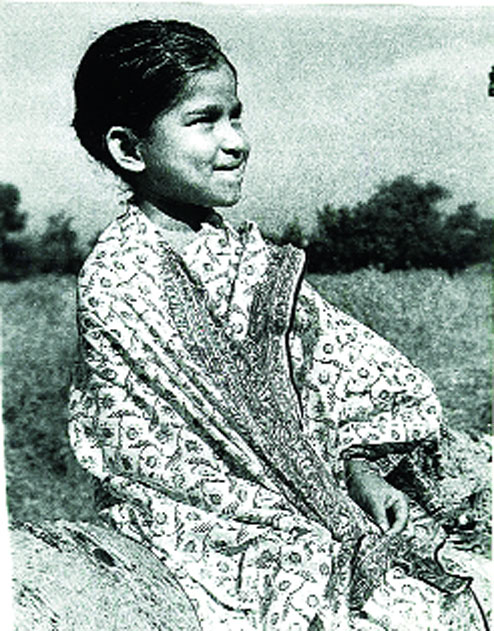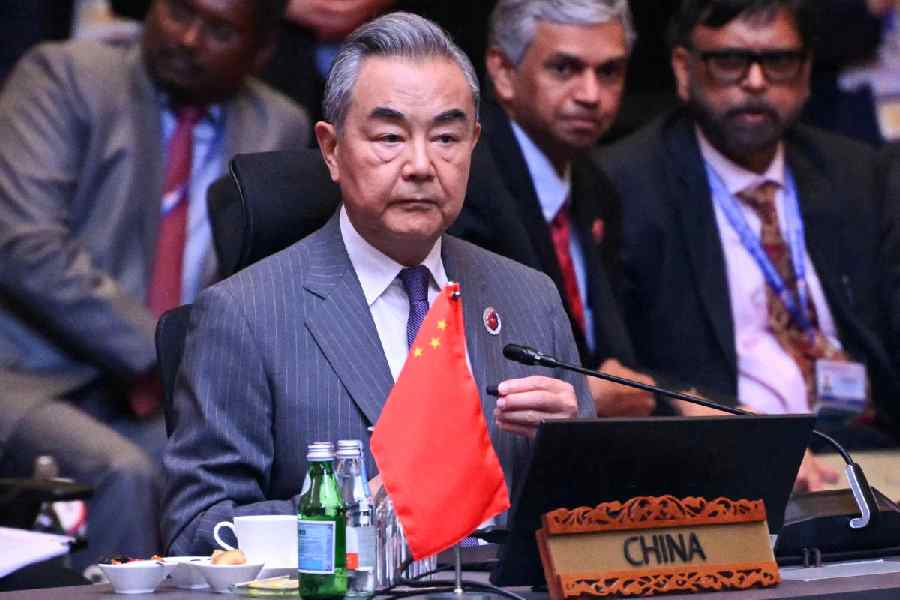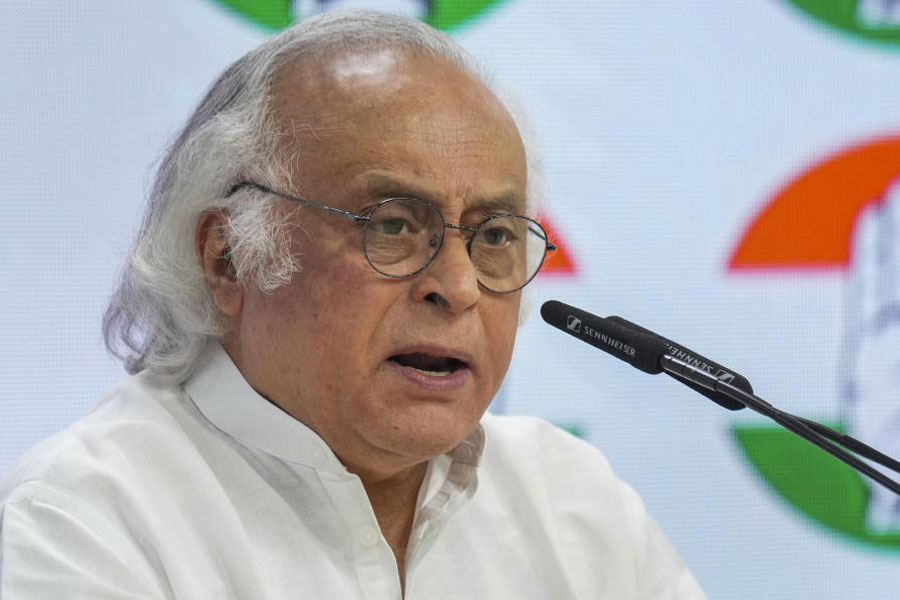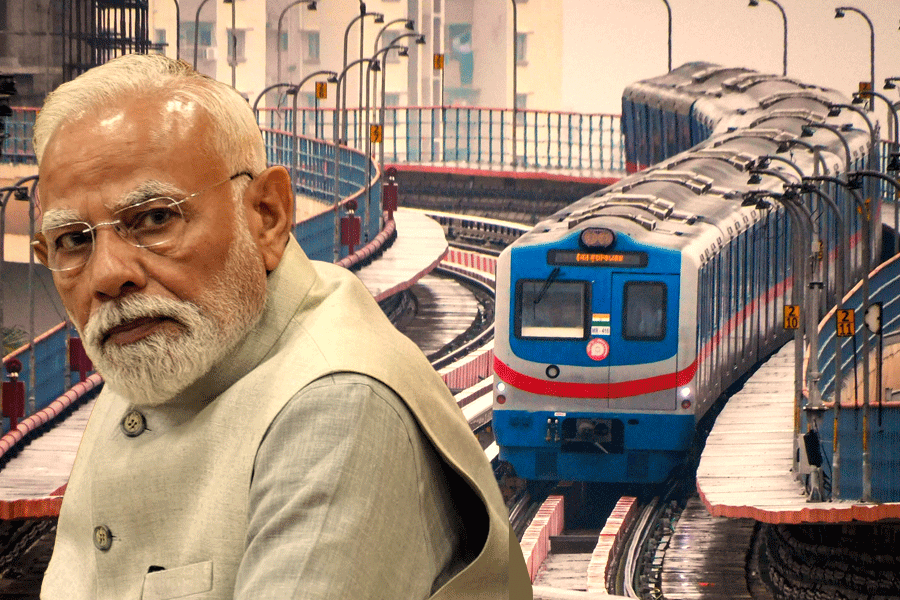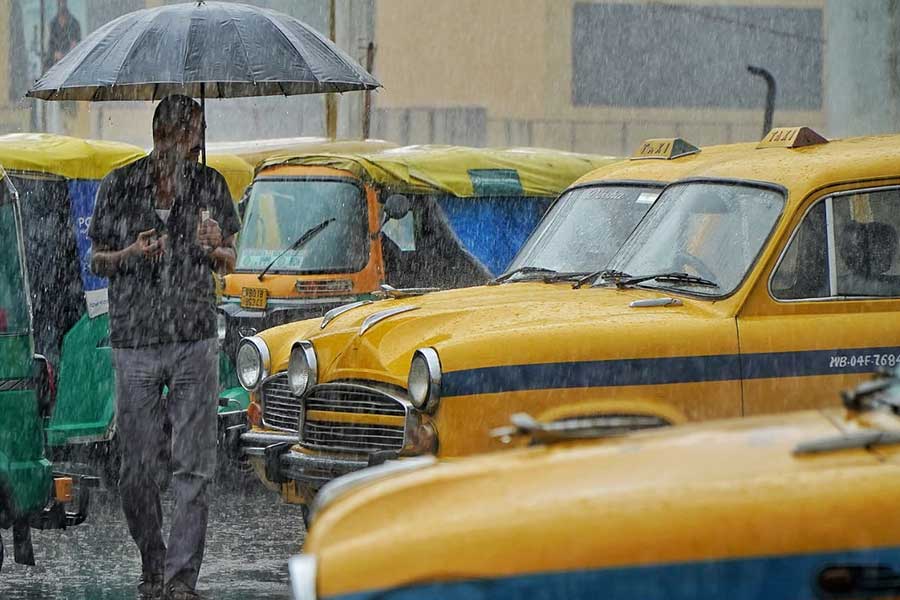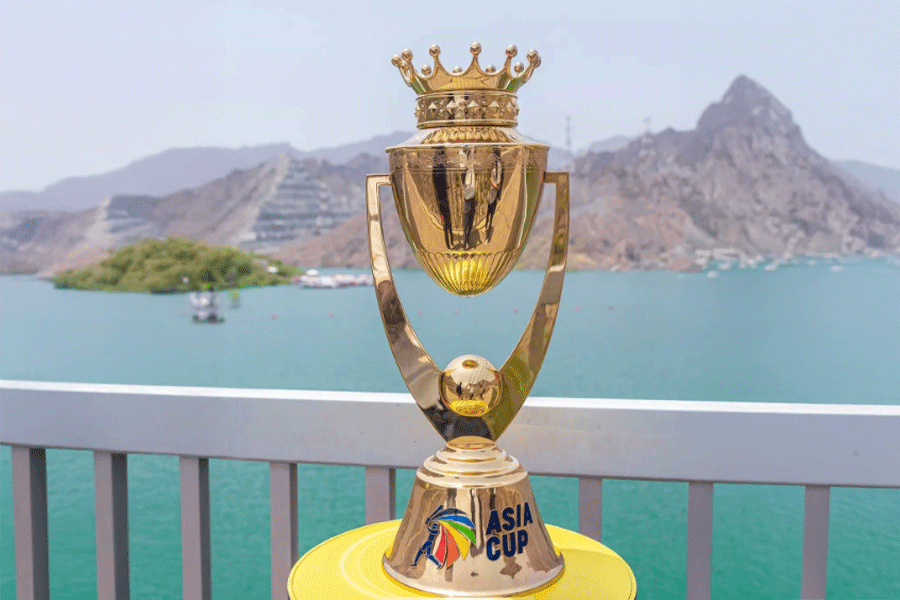A grainy frame from a microfilm marked "secret" provided by the Army Air Force Historical Research Organisation at the Maxwell Air Force Base may hold a clue to 130 photographs of 1940s rural Bengal taken by an unknown American soldier that a photographer and artist couple found in a box they had picked up at a junk sale.
The tale of how Alan Teller and Jerri Zbiral followed the box from America to Bengal is now for the telling. A set of eight panels with photographs and information is touring set to tour American consulates in Delhi, Chennai, Hyderabad, Mumbai before it arrives in Calcutta in November. The exhibition premiered at the University of Chicago Center in the Capital on April 1. A film on the project made by Calcutta-based filmmaker Anirban Mahapatra will premiere at the New York Indian Film Festival in May.
Besides unravelling the stories behind the World War-II era negatives from the box, the exhibition also highlights many unknown episodes from India in 1945.
The search for the person who took the photographs of temples and markets, men and women working in fields, washing clothes, threshing grain, catching fish, building huts, eating paan or just chatting began soon after the couple chanced up on the box.
Alan's 2013 Fulbright-Nehru senior scholar award for research helped them scour archives in the US and India and hunt for clues across Bengal's countryside.
Research led them to conclude that the images were probably taken by an American photographer, who was part of the XXth Bomber Command and assigned to the 10th Combat Camera Unit or the 2nd Combat Camera Squadron working out of Hijli-Kharagpur-Salua. When the war ended in Europe, the unit was dissolved.
JOURNEY BACK IN TIME: BENGAL THROUGH FOREIGN EYES


The latest clue is an image from History of the 10th Photographic Technical Unit marked "Sergeant Sommer preparing to leave on a local mission". A camera in the hand of one of the men in the photograph has made Alan and Jerri hopeful that Sergeant Sommer could be the unknown photographer.
"It is the closest clue yet! Yes, I believe Sommer is the one on the right, with a Speed Graphic in his hand. I'm afraid that this is the best image we have. The building on the left is almost certainly the old administration building at IIT-Kharagpur, the Hijli command centre during World War II. The building has roofs like that in each corner, as well as a tower with a similar roof structure. We were thrown off at first, because we realised it wasn't the tower. But if you look at an old photo of the building you can see that the jeep was probably in front of one of the corners of the building. This could be our man," Alan told Metro.
Research has revealed that there was indeed a reconnaissance photographer called Sommers living in Wisconsin, close to where he bought the box of photographs for $20. But Jerri hopes it's not him. "I don't want it to end," she laughs.
The search touched several lives in India and the US from 80-year-old Padmavati recognising a photograph of her father-in-law A. Narayan Swamy Naidu, the priest and founder of the Balaji temple in Kharagpur, to Gurkha soldiers searching the base (now Eastern Frontier Rifles head quarters) for remnants of a laundry seen in one of the photos.
American Arthur Mitchell, one-time resident of Kharagpur, has also shared with the couple photographs taken by another American soldier, Tony Mayo, who was at the Kharagpur base in the 1940s.
The fact that most of the photographs are dated May 1945 suggests that these may have been taken as a personal project in a transitional period, when the men were waiting to be reassigned to Okinawa.
The unit operated in Bengal from 1942-1945 and was engaged in reconnaissance work, taking aerial photographs of the land with special cameras to facilitate an invasion of Japan. In India, the unit was assigned first to Guskara, then to the Alipore airbase and finally the Hijli airbase in Khargpur.
Between 1944 and 1945, there probably had been five photographers - Glenn S. Hensley, Frank Bond, Lewis Paltz, Tony Mayo and the unknown photographer based for some time in Kharagpur and Guskara. But not all were interested in the life, architecture or landscape around them, most were content photographing fellow army men, parades, planes and bombs.
Hensley, Bond and the unknown photographer seemed to enjoy documenting Bengal's village life, armed with their standard army-issued Speed Graphic press cameras. "It was a heavy and complex piece of equipment with f-stops, manual focus and film holders that needed to be replaced after every shot, operating one required real skill," said Alan.
The Digital South Asia Library Archives, University of Chicago, has several photographs taken by Bond in Guskara and a few by Hensley in Kharagpur.
A series of photographs of a village girl called Mukta shows Hensley and some colleagues striking up a rapport with the villagers. Hensley's accompanying notes (for his wife to use in teaching world history courses in Missouri during World War II) go thus: "Several friends and myself noticed her choking back tears as she sat near the road between the air base and Khragupur..." .Mukta had "fallen and smashed one of her most cherished items, her comb. She was wearing only a loin cloth. While in town that day, we decided to buy Mukta a comb....On the way back to the base, we saw her again and presented her with the new comb.... Her dimpled smile and older-than-her age conversation plus profuse thanks captured our hearts. She made a good photo model, too."
The next time Hensley saw Mukta, he thought "she needed more than a loin cloth, so...we bought her a brightly-coloured, child-sized sari. That afternoon, she met us as we had asked and she was given the package containing her new clothes. What happened is illustrated. She hurriedly opens the package and quickly drapes herself with the garment".
"She was a great kid, really appreciative and intelligent. I often wonder how life has treated her and if she remembers...her special friends in 1945," Hensley wrote.
The airmen had access to darkroom facilities, so they were able to show the results of the encounter to Mukta and her father, who was "very proud". Alan and Jerri found an old dark room at IIT-Kharagpur that may have been used by the photographers.
Another of the photographers - Lewis Paltz -died last year but his son David has shared with Alan and Jerri several photographs, including one of a group of GIs sitting casually around a table playing cards. He, however, can't recall his father ever mentioning a photographer war buddy.
But as the exhibition concludes "... the photographer remains elusive as new clues surface, it becomes ever more apparent that history is alive, that all of us play a part. Untold stories lie hidden in countless shoeboxes. We just have to make the time to look".

